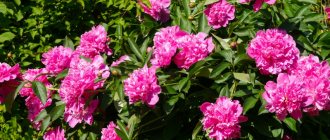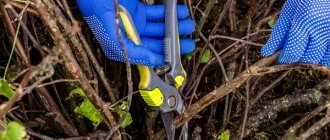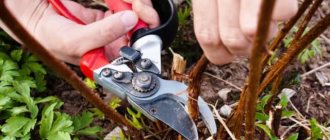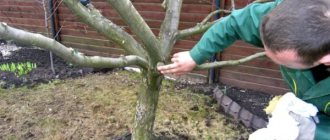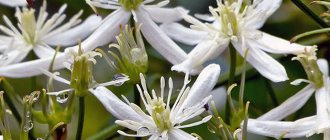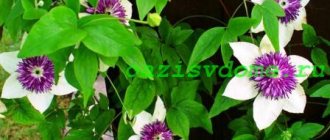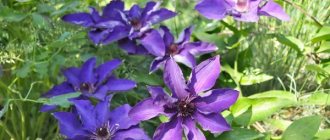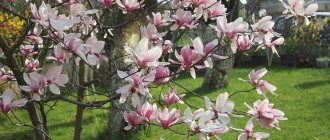Charming lushly blooming hydrangeas of various types and varieties can increasingly be found on the plots of gardeners in the middle zone, and it is not by chance that they have become so widespread. From the very beginning of summer, densely leafy shrubs are covered with incredibly beautiful inflorescences and delight with flowering until the first frost. Excellent winter hardiness allows them to be grown without much difficulty, however, covering hydrangeas for the winter is still important for certain species.
The main points for caring for hydrangea are slightly acidic soil, timely fertilizing and abundant watering. By following these simple rules, you can achieve unsurpassed results and grow a stunning beauty on your property. The more careful the care, the more powerful the shoots, the larger the leaves and inflorescences. How to preserve this charming shrub in the unpredictable winters of the middle zone? We will talk about this in this article.
Sheltering hydrangeas for the winter in the Moscow region is required only for the large-leaved species (Hydrangea macrophila), since for them the most important thing is to preserve the tops of the shoots, on which the plant lays flower buds in the fall. Indeed, unlike paniculata and tree-like, it blooms on last year’s shoots. This type of hydrangea came to us from Europe, where winters are not as severe as in Russia, but there are still some varieties with a little more winter hardiness than others, and they will be most comfortable in the middle zone. For example, large-leaved hydrangea "Endless Summer original" (Endless Summer original) and large-leaved hydrangea "Endless Summer Bloomster" (Endless Summer Bloomster).
Covering large-leaved hydrangea is carried out gradually
- You need to start by mulching the base of the bush. Peat, pine litter or even fallen oak leaves are perfect for this, because they do not rot.
- Also, be sure to remove both drying and green foliage from the shoots, since under cover it can begin to rot and harm the bush.
- If the bush is young, loosely tie the shoots together, and if the hydrangea is already quite thick, then combine 4-5 branches to tie them together. It is not recommended to use synthetics and it is better to tie them with some soft material so as not to damage the shoots.
- The tied bundles are bent to the ground very carefully, slowly, to eliminate the possibility of damage.
- When the connected shoots are already at ground level, fix the bunches. For example, metal staples are suitable for this.
- While night temperatures are above zero, wrap the resulting structure with covering material.
- When cold weather sets in, add peat or dry leaves over the covering material. Moreover, attention should be paid to the shoots from the middle to the tips, because we have already hilled up the lignified bases a little and this will be quite enough for them.
- Finally, you should install the arches or any other frame and cover it with covering material.
Under such a warm “blanket” your large-leaved hydrangea will survive well until spring, even if the winter is quite frosty, but not very snowy.
Spring opening
Large-leaved hydrangea differs from other varieties in its whimsicality and heat-loving nature. Caring for such a crop can cause a gardener a lot of trouble, but this is justified by its unique flowering in the warm season. If the flowers have successfully overwintered, and calendar spring has already arrived outside and the snow has melted, you should not rush to remove the winter shelter.
Indeed, in the first days of spring there is a risk of night frosts, which are extremely unacceptable for such a fastidious crop. Until the threat of freezing temperatures finally disappears, the bushes should remain under reliable protection. Otherwise, the overwintered buds will freeze, and the hydrangea will not be able to bloom in the new season.
Experts advise gradually accustoming the hydrangea to new weather conditions and opening it for a short time during the day, and then closing it back. Naturally, such care requires the gardener to constantly stay in the country, which is not always possible. Therefore, you need to be guided by real opportunities and avoid mistakes that could ruin the culture.
First of all, when the temperature rises above zero, ventilation must be carried out. And as temperature values continue to rise, you can remove the covering material, especially film or roofing felt, looking for an alternative. But opening the plant completely is allowed only when stable above-zero temperatures return.
Covering hydrangeas for the winter is the most important step in caring for such a fastidious crop. If you do not follow the basic rules of protecting a plant from the cold, it will stop pleasing others with its flowering and will quickly freeze. Therefore, every gardener should understand how to properly insulate a garden hydrangea, regardless of where it is located, either in the Moscow region, or in harsh Siberia.
How do tree, paniculate and petiolate hydrangeas winter?
Shelter for paniculata hydrangea is not required, as is the case for tree hydrangeas. Not only do they have enviable winter hardiness, even if the tops of the shoots freeze a little, it’s not a big deal. In the spring, the tips can be trimmed to the nearest living pair of buds, and your favorite shrubs will delight you with abundant flowering throughout the next season, becoming denser.
Many people don’t even remove the petiole hydrangea from its support for wintering, but if you want to play it safe, it won’t be superfluous - the vine can easily overwinter even without a hint of freezing. On the other hand, the plant needs to be hardened, because when the vine completely grows, removal from the support will become a complex and time-consuming process. Therefore, you can leave it on the support and trim off the frozen ends in the spring.
You only need to cover paniculate, tree-like and petiolate hydrangeas in the first three years after planting if you are growing this beautiful plant from cuttings. And if you purchased a three-year-old or older seedling, then after planting you no longer have to worry about wintering it. Some people like to play it safe, but there is no need to spoil the hydrangea, because, as an adult, it will winter well in the middle zone without shelter.
Feeding and pruning
For the normal development of hydrangea bushes, it is important to regularly feed them with special mineral compounds that will promote good growth and lush flowering. Feeding activities are carried out as follows:
- The first fertilizing consists of urea, potassium and superphosphate and is applied in early spring, when the crop emerges from hibernation and begins to grow actively.
- A similar composition, but without urea, is applied in mid-summer, when the first buds appear on the bush.
- At the end of the flowering period, rotted compost or humus is added under the bush.
The most important step in proper care before wintering is pruning. If you ignore the importance of the procedure, the plant will die with the arrival of the first winter frosts. Large-leaved hydrangea differs from other species by its flowering on last year's shoots. Therefore, when performing work, it is necessary to trim the plant short. This rule applies to both paniculate and tree species.
You can also shorten the stems slightly , but completely getting rid of the shoots is only allowed if they have been damaged by frost or dried out. In addition, the gardener needs to get rid of shoots that have reached four years of age, because they are old and unable to demonstrate lush flowering during the warm period.
Large-leaved hydrangea is famous for the annual growth of new flowering shoots, so it is important to carefully cover them before wintering, otherwise they will begin to freeze out and will not be able to survive the coming winter. With proper shelter, the crop will be reliably protected from the most severe cold, so it will definitely thank its owner in the form of lush and abundant flowering.
Only careful care and compliance with the basic rules of shelter can protect such a colorful bush from freezing. They are required both for the middle zone and for the harsh northern regions with intense winters.
Therefore, when figuring out how to cover large-leaved hydrangea for the winter, you must follow the basic rules and follow the instructions of experienced gardeners to prevent the flowers from freezing. In this case, the cover used should be of the highest quality and dense, both for large-leaved hydrangea with lush pink flowering, and for other heat-loving varieties.
How to prepare hydrangea for winter
Spectacular hydrangeas overwinter with varying degrees of survival, it depends on the type of ornamental plants growing on your site. For example:
- Varieties of tree and paniculate hydrangeas tolerate frosty winters well and can quickly recover from damage in the spring.
- Large-leaved hydrangea is not highly winter-hardy, so its above-ground part can freeze out in severe winters. Considering that such damage will affect the intensity of flowering (the plant produces flowers on last year’s shoots), it is worth carefully insulating the bushes.
- Himalayan hydrangea (ground cover) - has enviable winter hardiness and can overwinter under light cover.
- Oakleaf hydrangea does not tolerate severe frosts and icy winter winds. Requires reliable shelter.
- Petiolate hydrangea - tolerates long cold weather well without damaging future flowering, does not require shelter or insulation for the winter.
In order for the plants to be prepared for wintering, it is necessary to perform a number of special measures:
| Event name | Description |
| Removing leaves | In order for the hydrangea trunk to become woody, the lower leaves of the plant are removed from the plant at the end of July. |
| Watering | From September, watering hydrangeas is significantly reduced, and in rainy weather it is stopped completely. During heavy autumn rains, bushes should be covered with a film on top, which will prevent the plant from becoming waterlogged. Do not allow the plant to overwater in the autumn. |
| Fertilizer application | It is strictly forbidden to fertilize hydrangeas with organic matter in the autumn - this helps to increase the proportion of nitrogen. Along with organic fertilizers, it is not recommended to feed hydrangea bushes with boron, magnesium and iron - these mineral additives cause rapid growth of green mass, which is unacceptable at the end of the season. To ripen and strengthen the shoots at this time, it is necessary to fertilize the plants with potassium and phosphorus compounds. It is best to plan fertilization before pruning and covering work. In different regions, this time falls on different dates, it all depends on the weather conditions in a certain area. Fertilizer is applied in dry form, scattered over the surface of the soil; during precipitation, the nutrients will be absorbed into the ground with rainwater and go directly to the roots. In dry weather, it is worth watering the bushes with a nutrient solution at the root, preparing a liquid mixture of 16 g of potassium monophosphate and 15 g of superphosphate, taken per bucket of water. |
| Plant preparation | Preparing plants for wintering includes pruning faded shoots, preparing covering material and constructing the shelter itself. Particularly important is the pruning of bush hydrangeas, which depends on the type of plant. If you prune shoots haphazardly, you may not see flowering next year. |
| Hilling | Before wintering, the lower part of the hydrangea bush should be covered with dry soil, peat or leaf litter. |
Plant frost resistance and wintering characteristics
Florists cultivate various varieties of hydrangea-hydrangea, which grow well in soil with a high pH reaction:
- large-leaved. A crop with a low level of frost resistance. Flower buds form on last year's shoots. Large-leaved hydrangea needs careful treatment when preparing for winter, given that without shelter the flowering branches will freeze and the bush will not bloom;
- oakleaf. Hydrangea is afraid of frost and reacts poorly to wind. When planning to decorate your garden with this beauty, you should select a cozy corner for it away from the prevailing wind directions. For a successful winter, the bush must be well covered;
- Himalayan The garden flower is characterized by high frost resistance properties; the need for shelter arises in exceptional cases;
- tree-like. The culture does not experience discomfort from the effects of severe frosts. Recovers easily after wintering;
- paniculata. This variety of flowering shrub is one of the most frost-resistant, able to withstand temperatures down to -35°C.
Paniculata hydrangea
Of great interest among gardeners is petiole hydrangea, which consistently tolerates low temperatures and does not need shelter.
